canon camera
Feb 20, 2021 11:25:54 #
Ednsb
Loc: Santa Barbara
1st question what are you shooting in low light? Handheld or tripod (monopod).
2nd what lens do you own
2nd what lens do you own
Feb 20, 2021 13:29:34 #
1st - I hope it isn't too late to say WELCOME TO UHH!
I opted to go to an 80D (the 90D was not out yet) to improve low light performance over my T2i (which I still use). The problem I needed to overcome was NOT noise, rather, it was inability to focus. I am quite happy with the result. I'm sure that a full frame would do even better, but since the 80D works for me, I don't have GAS for it. However, if Canon comes out with an APS-C mirrorless that take R series lenses, I might be tempted.
I opted to go to an 80D (the 90D was not out yet) to improve low light performance over my T2i (which I still use). The problem I needed to overcome was NOT noise, rather, it was inability to focus. I am quite happy with the result. I'm sure that a full frame would do even better, but since the 80D works for me, I don't have GAS for it. However, if Canon comes out with an APS-C mirrorless that take R series lenses, I might be tempted.
Feb 20, 2021 14:21:29 #
[quote=RPaul3rd] A tripod will always be necessary when shooting low light or nearly no light situations.
Not in my lifetime. Back in the day, I went with 35mm because it was light and you didn't need a tripod . Digital to me is just like 35mm - if I had to use a tripod, I'd be looking for another kind of camera! Harry
Not in my lifetime. Back in the day, I went with 35mm because it was light and you didn't need a tripod . Digital to me is just like 35mm - if I had to use a tripod, I'd be looking for another kind of camera! Harry
Feb 20, 2021 14:38:57 #
My 70D and now 80D have both done well in low light situations even with the 18-135 lens I mostly use.
Feb 20, 2021 15:28:56 #
I have never like a tripod didn't want to carry it around....until this past Christmas. Then I went to the local park and gave it a try. Now I keep it attached to my backpack. There are so many more things I can get now that I couldn't before. About 1/2 of my woodland photography I do with a tripod. No flash, F/stop 8-11, ISO between 100/400. Not the greatest but my 1st time shooting at night.
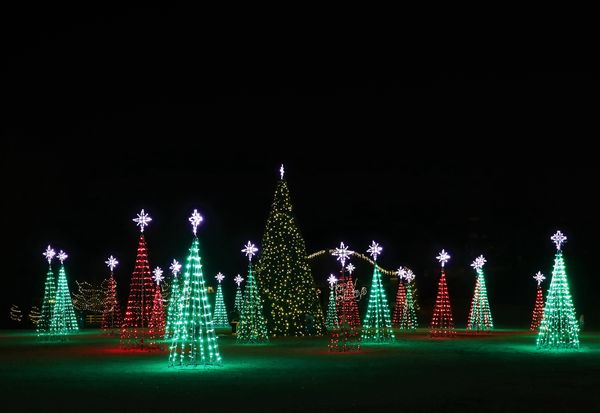
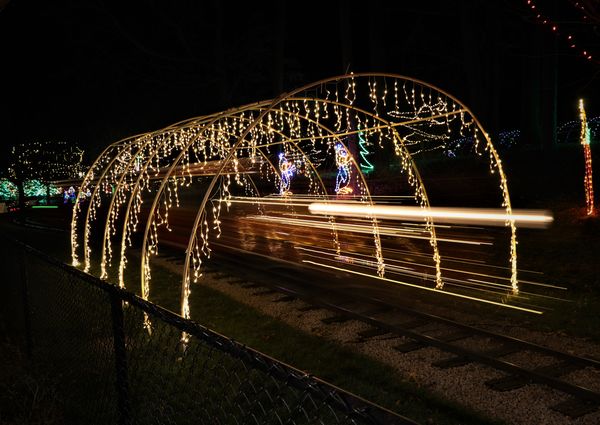
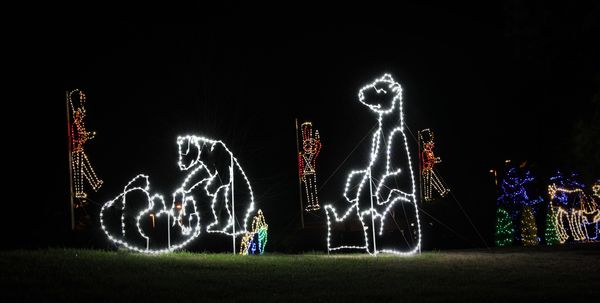
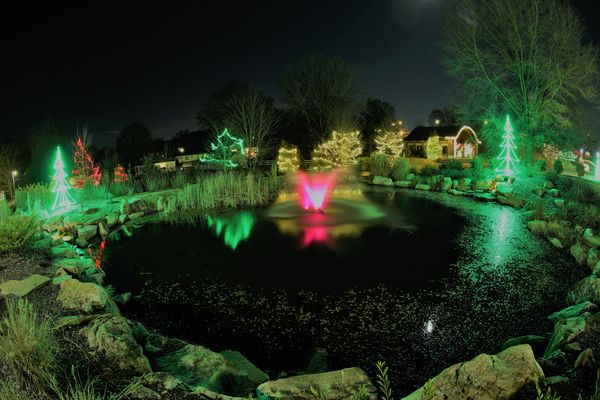
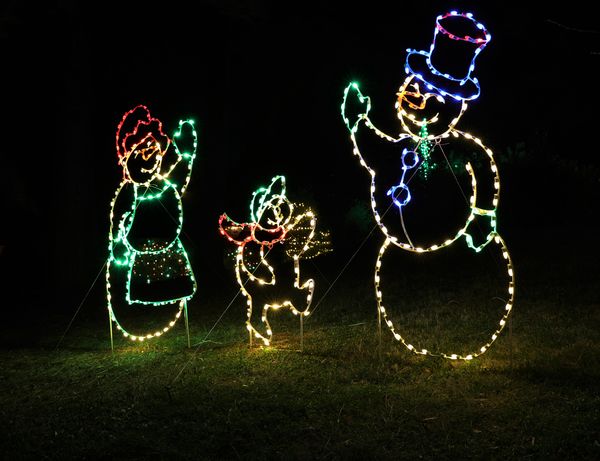
Feb 20, 2021 23:19:36 #
I just bought a new Rebel T8i. What a change from my old T1i...! It has a 24 megapixel sensor and the latest software digicam 8 so I am getting very usable decent pics at high iso’s And high SS. I am amazed how much better quality the pics are even at long range and cropping heavily...never tried Raw yet...
Feb 22, 2021 11:26:35 #
greger
Loc: benton harbor, mi
Thanks for all the great feed back. I have heard the 6d is good in low light. I would go used if I can. I shoot in jpeg because I don't know how to shoot raw and edit them in photo shop. I still have lots to learn. I mostly use my sigma 18-300 lens. but do own a ef24-105f4 lens. mostly wanted something better to shoot photos inside. I don't have any samples to post. you guys are great. I am new to this site. so thanks for being kind.
Feb 22, 2021 11:45:47 #
greger wrote:
Thanks for all the great feed back. I have heard the 6d is good in low light. I would go used if I can. I shoot in jpeg because I don't know how to shoot raw and edit them in photo shop. I still have lots to learn. I mostly use my sigma 18-300 lens. but do own a ef24-105f4 lens. mostly wanted something better to shoot photos inside. I don't have any samples to post. you guys are great. I am new to this site. so thanks for being kind.
Alas, both lenses are likely the limiting factor, rather than the camera, in low-light situations. The Sigma is f/3.5 on the short-end and f/6.3 on the long-end, rather 'slow' for low-light. The Canon lens isn't much better, being a constant f/4 for all focal lengths.
You might consider a small external flash like the Sunpak RD2000. You can go larger, heavier and more expensive, but this Sunpak model is a basic upgrade over your camera's pop-up flash.
Your best bang for the buck is a faster zoom or prime lens, at f/2.8 or faster. You might look at the focal lengths you're naturally using on your two zooms where more light was needed, and then look at a prime lens at / near the focal length. The EF 50mm f/1.8 STM is a popular and cheap lens, but on your cropped body, this focal length can be a difficult to work with in tight situations. Canon has a number of 'fast' and IS-enable primes from 24mm to 35mm that might be a replacement for a frequently used focal length you note in reviewing your images. A modest zoom to consider might be the Tamron 24-70mm f/2.8 IS.
The lens and flash ideas migrate to a new camera when you do reach the end of the EOS T5i.
Feb 22, 2021 12:41:05 #
Feb 22, 2021 18:03:32 #
greger wrote:
Thanks for all the great feed back. I have heard the 6d is good in low light. I would go used if I can. I shoot in jpeg because I don't know how to shoot raw and edit them in photo shop. I still have lots to learn. I mostly use my sigma 18-300 lens. but do own a ef24-105f4 lens. mostly wanted something better to shoot photos inside. I don't have any samples to post. you guys are great. I am new to this site. so thanks for being kind.
The mirrorless full frame canon RP has exactly the same sensor as the 6Dii. To me the benefits of mirrorless make the RP the easy choice.
Feb 22, 2021 22:24:13 #
greger wrote:
Thanks for all the great feed back. I have heard the 6d is good in low light. I would go used if I can. I shoot in jpeg because I don't know how to shoot raw and edit them in photo shop. I still have lots to learn. I mostly use my sigma 18-300 lens. but do own a ef24-105f4 lens. mostly wanted something better to shoot photos inside. I don't have any samples to post. you guys are great. I am new to this site. so thanks for being kind.
One final thought. Consider your software and whether changes in your images and the post processing is a change to now consider. Cameras do a fine / acceptable job on the noise in JPEGs. You can make some improvements in post processing. You have much more control and potential impact of noise processing for RAW files. You still should always seek the best possible 'potential' image coming out of the camera, where a faster lens helps all cameras in all low(er) light situations.
Feb 23, 2021 14:33:52 #
amfoto1
Loc: San Jose, Calif. USA
greger wrote:
hi, I use a canon t5i. what would be a good canon camera for good low light performance? would I need to go full frame? I do have a couple ef lenes.
thanks
thanks
The T5i uses an 18MP sensor the same as in the original 7D, which I shot with for around 5 years. They are pretty good at low light shooting (better than earlier cameras), but I fount it's particualrly imperative to avoid underexposure at higher ISOs with that particular sensor. Avoid under-exposure like the plague, because if you have to boost exposure at all in post-processing it will greatly amplify digital noise in image.
In fact, I found the best results with my 18MP Canon DSLRs could be had by doing a little bit of over-exposure... 1/3 to 2/3 stops... and then "pulling back" exposure in post-processing. Doing that I was able to get usable images out of the camera at ISO 6400.
This 'tweak" isn't necessary with newer Canon APS-C cameras. I've used a pair of 20MP 7D Mark II at ISO 12800 and higher and gotten usable images. It's still important to avoid under-exposure, but deliberate over-exposure (as described above for the 18MP cameras) no longer seems to help. Below is a test shot I did with 7DII at ISO 16000 and a detail from the same image that shows that while, yes, there is some noise, it's well controlled, more like "film grain" and a lot less problematic in the image.


Above high ISO test photo was shot hand held with 1/125 shutter speed and EF 100-400mm "II" lens at 158mm and f/5, with Image Stabilization on and set to Mode 1 (which is where I leave it most of the time). NO NOISE REDUCTION was done to the image other than the default setting in Lightroom during RAW conversion. I did boost contrast in the image (curves adjustment in Photoshop), because another effect of high ISOs is to reduce dynamic range. At base ISO 100 the 7D II has about 9 stops of Photo Dynamic Range.... at ISO 16000 that's dropped to less than 4 stops. This is the case with ALL digital cameras... the higher the ISO, the less dynamic range. (See the links to Photons to Photos website, below.)
I should mention that I almost always shoot RAW and post-process primarily through Lightroom and Photoshop. I have an Imagenomic Noiseware plug-in in Photoshop that I use for my highest ISO images. In the past with older versions of LR and PS I wasn't as happy with their noise reduction, so I instead tended to use Canon's own Digital Photo Pro (DPP) for RAW conversion, specifically for it's better handling of noise at that time. Since then both LR and PS have improved quite a bit, and the Noiseware plug-in is even better because it allows a great deal of user control over noise reduction.
Another thing that's critical to minimize noise is to NOT do much or any sharpening of images BEFORE doing the noise reduction. If you sharpen while noise is still present in images, it will be amplified. In fact, it's good practice to do any sharpening very late in the post-processing sequence... after all other adjustments and retouching have been done... after the image has been resized for it's intended use.
Canon's newer 24MP cameras seem to be about the same... maybe a very little bit less capable of high ISO than the 20MP 7DII because the higher resolution makes for more crowded sensor makes for more heat and "cross talk" between pixel sites. I have an M5 with the 24MP sensor that doesn't seem to give quite as clean images at high ISOs, as my 20MP 7DII do.
There also are things you can do other than buying a new camera....
First of all, do all you can to minimize cropping. Any cropping will magnify short-comings in images. It will make noise more obvious and "throws away" a lot of the original image's resolution. For example, cropping a full frame image down to Canon APS-C size is actually "throwing away" more than 60% of what the camera originally captured. It's effectively more than doubling the appearance of noise (and any other flaws) in the image.
Second, don't be ridiculous about noise. All digital images are made up of individual pixels. When you enlarge those beyond a certain point on your computer screen, you begin to see the individual pixels, including noise. Many people judge their images on their computer screens at way too high magnification. Most computer monitors display around 100 pixels per inch. As a result, when you look at an 18MP image "at 100%" on a computer screen, that's like making a 35 by 52" print, then looking at it from 18 to 20" away. This is way, way bigger and way more critical view of the image than you are likely to ever use it. It's way bigger than most other people will ever see the image, unless you actually print it out that large. "Down-rezzing" the image, reducing it's size for the final use, will do a great job minimizing noise in images... often making it undetectable. (BTW, also don't panic about minor focus errors or lack of sharpness of images "at 100%", unless actually planning that huge print.)
It's fine to zoom into an image 100, 200, even 300% or higher on your computer screen to work on it... for example retouching to remove a dust speck. Just don't use those high magnifications to judge how the finished image will actually look. When making a print, I find that 33% view of an image is pretty close to "actual size" on my computer monitor (set to the monitor's native resolution). If I'm going to be posting the image online it's even less than that. On the extremely rare occasion when I am making a very large print, I would "up-rez" the image... increase it's size using careful steps and maybe even specialized software made for that specific purpose. Even then, some appearance of noise or other "flaws" in an image may still be meaningless, because the print will only be viewed from several feet away.
A third possibility... instead of upgrading your camera, maybe you should be spending your money on a lens or a tripod. A lens with a larger aperture can allow you to use a lower ISO with less of a noise problem. You do have to watch depth of field, that it's sufficient for the image. And focus accuracy becomes more critical with larger aperture lenses. But it can make a world of difference if a lens has an f/2.8, f/2, f/1.8 or f/1.4 aperture.... compared to a kit lens with f/4 or f/5.6 as it's largest available aperture. For example, if you are shooting with an EF-S 18-55mm lens, all of those are f/3.5 or f/4 to f/5.6, at best and the most effective thing might be to invest in an EF-S 17-55mm f/2.8 or EF 35mm f/2 lens to use upon your camera.
If your subjects aren't moving, a tripod may be the solution. Longer shutter speeds will allow lower ISOs to be used. One thing to watch out for with Canon cameras is a feature called "Long Exposure Noise Reduction" (LENR). This is quite effective reducing noise in images. But it only works on shots 1 second or longer. It becomes a "problem" when people don't read the manual and understand how LENR works. It's actually two separate exposures... one is the image being made, the second is a "blank" shot of the same duration done with the shutter closed. That 2nd shot is used to identify noise, which is then "subtracted" from the first image. It's quite effective, when used correctly.
The problems occur when people don't use it correctly. Say you take a 4 second shot with LENR on. The camera will then need to take that 2nd shot, also 4 seconds in duration. Often people forget to make the 2nd shot or they think something is wrong with their camera and it's failing to take every other shot... or, even worse, they cancel the second shot because they think the camera is working improperly. With LENR when you cancel the 2nd shot (by turning off the camera or removing its battery), both the 2nd shot and the 1st shot are deleted! Sometimes people forget they set LENR to take a long exposure, then go back to taking other shots where it isn't effective and forget they had it on. The next time they take an exposure 1 second or longer, they think the camera is doing something weird and turn it off before the LENR process is completed.
So, use LENR when appropriate. It works. But be mindful of how it works, that every shot will actually be two and making one image will take twice as long as usual. And turn off LENR when you're done using it.
A common problem when doing longer exposures is camera shake blur. Use a remote release so you aren't touching the camera during the exposure. If you don't have a remote release, it's also possible to use the self-timer. A 2 second or longer delay after you press the shutter release is usually plenty to allow any vibrations you caused to dissipate.
Another thing with long exposures that can cause camera shake blur is "mirror slap"... the action of the mirror moving causing vibrations inside the camera. Your camera may have a "mirror lockup" mode to avoid this. However, even if it doesn't, you can use Live View instead. It does the same thing... lifting the mirror well in advance of making the exposure. (There's still some slight risk of internal vibrations from the shutter action, but there's little you can do about that in a DSLR. They still need to use the mechanical shutter to control the exposure. It can help to place some moderate weight, like a bean bag, on top of the camera and lens to absorb vibrations.)
If you are still thinking a change of cameras would be helpful, the chart at this link may be interesting to you:
https://www.photonstophotos.net/Charts/PDR.htm#Canon%20EOS%207D%20Mark%20II,Canon%20EOS%2090D,Canon%20EOS%20700D,Canon%20EOS%20M5
The chart at the above link compares four Canon APS-C cameras:
- your 18MP T5i (also called 700D)
- my 7D Mark II (20MP) and M5 (24MP)
- the latest 32.5MP Canon 90D (the M6 Mark II uses same sensor).
This chart basically shows that you would gain about 1/2 stop higher usable ISO with a 20MP or 24MP Canon APS-C camera, or close to 1 stop higher usable ISO with the latest 32.5MP models (which is actually pretty amazing considering the dramatic increase in resolution).
Yes, a full frame camera might allow even higher ISOs to be used, as shown by this chart:
https://www.photonstophotos.net/Charts/PDR.htm#Canon%20EOS%205D%20Mark%20IV,Canon%20EOS%206D%20Mark%20II,Canon%20EOS%20700D
This chart compares your camera against two current Canon full frame models: 5D Mark IV and 6D Mark II.
It basically confirms that 5DIV would give you about 1.5 stops higher usable ISO at all ISOs available on your camera. The 6DII also is better, though there's less difference between it and your camera at lower ISOs.
"Going full frame" has pluses and minuses. Yes, you get higher usable ISO. But the cost, size and weight of the camera will increase significantly. Also any "crop only" lenses you have, especially EF-S, will need to be replaced with full frame capable lenses. And those FF lenses will be bigger, heavier, more expensive.
For example, perhaps you use the Canon EF-S 55-250mm now... that lens weighs under 1 lb. and costs $300. To have the same "reach" on full frame, you will need to replace that lens with a full frame capable 100-400mm. There are three of those for use on Canon: Sigma's that's about 2.5 lb and costs $800, Tamron's that's also about 2.5 lb. and $800, or Canon's excellent EF 100-400mm II that weight 3.5 lb. and costs $2400. (https://www.bhphotovideo.com/c/compare/Canon_EF-S_55-250mm_f_4-5.6_IS_STM_Lens_vs_Canon_EF_100-400mm_f_4.5-5.6L_IS_II_USM_Lens_vs_Sigma_100-400mm_f_5-6.3_DG_OS_HSM_Contemporary_Lens_for_Canon_EF_vs_Tamron_100-400mm_f_4.5-6.3_Di_VC_USD_Lens_for_Canon_EF/BHitems/1001311-USA_1092632-REG_1321312-REG_1362804-REG)
Or, perhaps you use that Canon EF-S 18-55mm, which weighs under 1/2 lb. and costs $250. The closest full frame replacement would be EF 24-105mm "STM", costing $600 and ver 2X the weight... or the Canon 24-70mm f/4 weighing 1.3 lb. and costing $900... or the EF 24-105mm f/4 "II" at 1.75 lb. and $1100.
Or, compare wide angle crop only zooms (EF-S 10-18mm & EF-S 10-22mm) against their full frame equivalents (EF 16-35mm f/4 and 16-35mm f/2.8 III):
https://www.bhphotovideo.com/c/compare/Canon_EF-S_10-18mm_f_4.5-5.6_IS_STM_Lens_vs_Canon_EF-S_10-22mm_f_3.5-4.5_USM_Lens_vs_Canon_EF_16-35mm_f_4L_IS_USM_Lens_vs_Canon_EF_16-35mm_f_2.8L_III_USM_Lens/BHitems/1051476-USA_351542-USA_1051475-USA_1274708-REG
Of course, some of the above are premium "L" series lenses, so not directly comparable to "kit" lenses sold with T5i. There also are more expensive and higher quality crop only lenses (such as the EF-S 17-55mm and EF-S 10-22mm mentioned above). Even so, rest assured if you "go full frame" you'll very likely also need to revise your lens line-up with lenses that are bigger and heavier... lenses that cost more. That's a lot of effort to get maybe 1.5 stops of higher usable ISO! You may be better served by some of the alternatives suggested above.
Feb 23, 2021 15:11:52 #
greger
Loc: benton harbor, mi
thanks very much for all the great info and taking your time to help me.
If you want to reply, then register here. Registration is free and your account is created instantly, so you can post right away.




